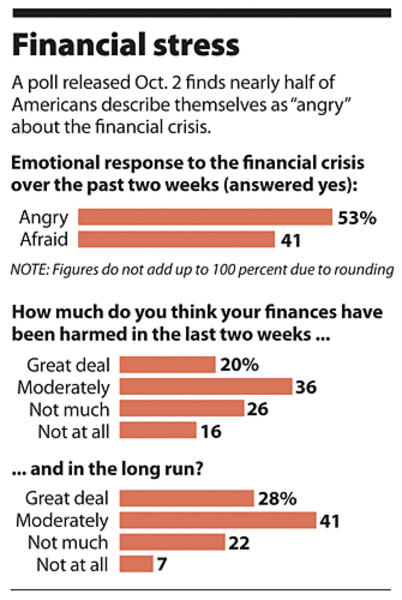Paulson crafts his new role
Loading...
| Washington
Wall Street now runs through Washington.
Well, maybe not literally. But the Oct. 3 enactment of a massive rescue bill, plus the government bailouts that preceded it, may have changed fundamentally the relationship between the US capital and the nation's financial markets – and perhaps free-wheeling capitalism itself.
Treasury Secretary Henry Paulson will be the cartographer of a coming age of constraint, with vast powers to buy and sell bad assets, and hundreds of billions of taxpayer dollars at his disposal. Decades of deregulation appear to be at an end, with US agencies eager to impose new constraints on Wall Street's remaining firms.
"We can look forward to a new wave of financial regulation in the months and years ahead," says Richard Sylla, a historian of financial institutions and markets at New York University in an e-mail exchange. "Paulson put that on the agenda last winter, and it seems even more pressing after what has occurred from then to now."
So far regulators don't seem to be wasting time. The Treasury Department did not wait for the House's final approval of the bailout bill before beginning to plan for its implementation, according to US officials.
Secretary Paulson has already begun lining up outside advisers to help the government figure out how to price, buy, and manage bad mortgage-based assets. Paulson, and his immediate successors, won't exactly be kings of all the markets they survey.
Congress added significant oversight provisions to the bailout bill.
Among those intended to watch Treasury's actions closely will be a special Inspector General, and a five-lawmaker Congressional Oversight panel.
Still, the powers invested in the Treasury chief by the just-passed legislation remain unprecedented. Paulson can set up the new TARP (Troubled Asset Relief Program) in whatever manner he chooses. He gets to determine what institutions qualify for help.
As to what the US should pay for these assets, the new bill says only that the head of Treasury has to make purchases at the "lowest price that the Secretary determines to be consistent with the purposes of this Act ...."
At least we all know what the Treasury will be buying. It will be those much-discussed toxic loans – mortgage-based securities that have gone bad because real estate prices have fallen.
Except when they aren't. Here's the bill's secondary definition of troubled assets: "Any other financial instrument that the Secretary ... determines the purchase of which is necessary to promote financial market stability."
The revised bailout bill does keep a tighter hold on the nation's purse strings. It only allots the Treasury a first installment of $250 billion for the program, toward a cap of $700 billion.
But in essence Congress is still telling Paulson to create his own plan, implement it, and then get back to them with the results, said experts at an Oct. 1 Brookings Institution seminar.
"He's still getting a blank check," said Thomas Mann, Brookings senior fellow in governance studies. "Just with some whistles and bells on it."
As to further reforms, the coming push in Congress for new financial regulations will rival FDR's New Deal in its scope, said Rep. Barney Frank, chairman of the House Financial Services Committee, in an Oct. 3 discussion with reporters.
Beginning in January, the House and Senate will hold a series of hearings to determine what caused the current financial crisis, and what reasonable regulations will be needed to prevent it from happening again, said Democratic leaders.
In addition, lawmakers will wrestle with what sort of institution replaces the now US-owned housing giants Fannie Mae and Freddie Mac, said Mr. Frank.
"We have to rewrite housing finance in America," said Frank. As to what this may mean for Wall Street's raucous entrepeneurist culture, consider the fate of Morgan Stanley and Goldman Sachs.
As investment banks, Goldman and Morgan Stanley were lightly regulated. But both have transformed themselves into commercial bank holding companies, seeking safety from the credit crisis storms.
Instead of periodic government audits, they now face the prospect of dozens of regulators from the Federal Reserve and Office of the Comptroller of the Currency working permanently in their offices, peering into their business all the time.
The US will now get real-time information about Goldman's and Morgan Stanley's trading operations and financial positions.
All this Washington intervention in capitalist markets is historic, but it may be hardly unprecedented, notes Richard Sylla, the financial historian.
When World War I broke out in 1914, then-Treasury Secretary William McAdoo ordered the New York Stock Exchange to shut down. He wanted to discourage European investors from dumping their US assets in a wartime panic.
The stock exchange remained shut for four months. After the US entered the war in 1917, the government commandeered some key industries, such as railroads.
"Some see [these] incidents as the birth of big government in the US," says Mr. Sylla.
Washington acted similarly in World War II. The Treasury asked the Federal Reserve to create enough money to keep interest rates low, cutting down on war financing costs. Wage and price controls kept a cap on the inflationary pressures generated by this money creation.
But when the crisis passed, Washington retreated. The same thing may happen this time.
Regulatory cycles are long, and irregular, but eventually they turn. The New Deal of the 1930s receded after the end of the Great Depression. The thirty years of deregulation that began with the election of Ronald Reagan and continued in fits and starts through subsequent chief executives probably now has come to an end.
"If history repeats itself ... we can expect the interventions of today to be wound down after the financial and economic storms have passed," says Sylla.





